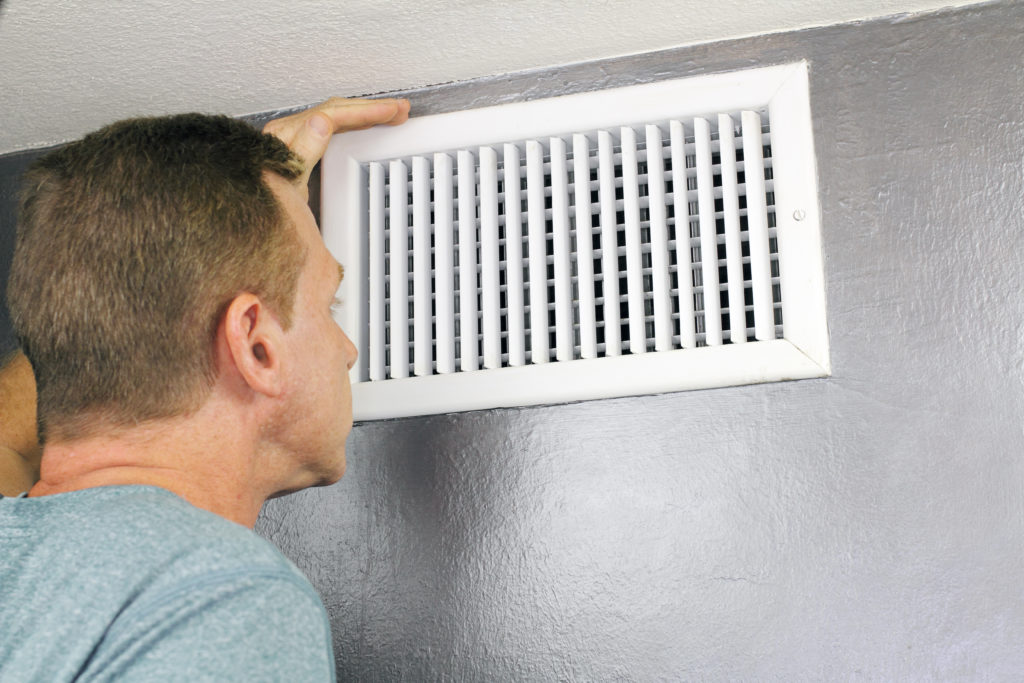Whether we like it or not, most of us have been spending more time indoors lately. So it seems like the perfect occasion to consider the air inside your home—is it healthy, or could it use a little help?
Indoor air quality can be impacted by a variety of dangers. Some of these we bring into our homes, such as pets with their dander or that lovely shade of blue paint with the volatile organic compounds (VOCs) it gives off. But other dangers—such as radon, molds, and pollen—sneak into the air without our knowledge.
No matter how these little buggers end up in your home, most of them are so teeny tiny that you can’t even see them. Take, for example, the atmospheric particle known as a PM2.5. This is a form of particulate matter (PM) with a diameter of about 3 percent the size of a single hair from your head, or 2.5 micrometers. Unless you’ve recently had microscope-vision installed in your eyes, you ain’t seeing these babies—but you will breath them because they are linked to common activities such as using a wood burning fireplace or letting the car run in the garage.
Each of our cells is a factory. Pollution clogs the cell, causing it to expend too much energy on detoxifying rather than doing its job and living another minute longer. PM2.5s are such light, miniscule particles that they are able to float in the air for long periods of time. Left unchecked, they can make their way into your nasal passages, then deep inside your lungs—triggering asthma, bronchitis, or other respiratory issues. The impact of PM2.5s on your cardiovascular system can be quite destructive as well. Long-term exposure has the potential to increase plaque buildup in your arteries, cause inflammation, and lead to hardening of the arteries.
Are there any solutions? A home air purifier can play a big role in combatting poor indoor air quality. But it’s important to seek out unbiased sources and do your research before making such a purchase. Consumer Reports, for example, performs extensive product testing and then shares their results with the public. Granted, you need to pay for an annual membership to view certain articles, but it can be worth it to help you make educated purchasing decisions.
Consumer Report’s buying guide for air purifiers explains the importance of getting one with a HEPA filter, which reduces these tiny particles by 50 percent or more. However, as the name implies, an air purifier can only do its job when these particles are floating in the air. It will help, but it won’t solve the problem once the particles land on a surface.
Good thing we have another ace up our sleeve—nutrition can also play a role in dealing with the effects of poor indoor air quality. This initially surprised me, but the more I dug, the more it made sense. You must provide your body with the nutrients it needs to help it cope with whatever it’s exposed to. Right? Right.
Here’s a list of the nutrients that your respiratory and cardiovascular system are looking for when it comes to dealing with poor indoor quality:
- Omega-3s from fish oil. The kind of omega-3 fatty acids found in fish oils help form and protect all of your cell membranes from the damages of pollution.
- Vitamin A. It’s well established that vitamin A is a key nutrient in the formation and health of the body’s mucus membrane linings, which cover most of the lung’s surface.
- Vitamin C complex. This nutrient offers cell protection against the stress of pollution and supports rapid detoxification via the liver and GI tract. Vitamin C complex also protects the mucus membrane linings of the lung from damage.
- Cruciferous vegetables. Kale, brussels sprouts, cauliflower, broccoli, and other cruciferous vegetables are mainline detoxifiers because of their specific phytochemical content. If organically grown, they’re also a huge source of many protective vitamins.
- Vitamin B complex. This vitamin complex provides the nerve energy and mechanics for the central nervous system, which can be impaired by the xenobiotics of pollution.
Breathing is unavoidable, yes? So best be sure your body is well-equipped to deal with whatever crashes the atmospheric party.
Images from iStock/AaronAmat (main), Serenethos (post).



